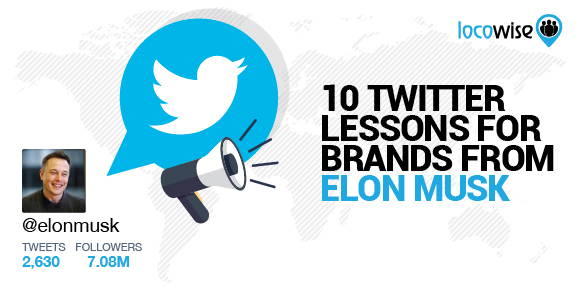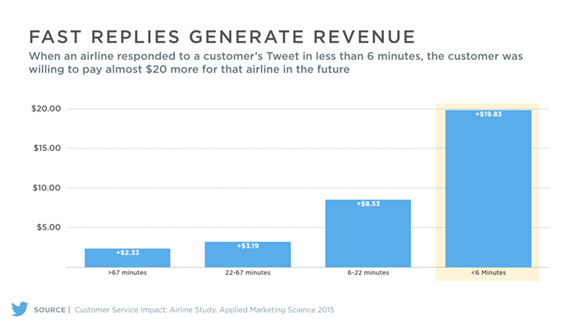In 2015 Elon Musk made news for what came to be known as his “$900 million tweet”. Just 10 minutes after posting a tweet about a new product line his shares had increased by almost a billion dollars.
More recently, the entrepreneurial giant transformed a complaint on Twitter into the ultimate customer service success story by taking a new approach to a challenge from idea to execution in just six days.
Musk’s approach to social media is much like his approach to business. He is, above all, “agile” in everything he does. Musk is proof that Twitter’s notorious 140-character limit can make money – and garner impressive publicity.

Lessons From the “$900 million Tweet”
In March 2015, Elon Musk saw his company add $900 million to its market capitalization in just 10 minutes following a single tweet.
In this “$900 million” tweet, Musk simply announced a new Tesla product line. In just 114 characters, he grabbed attention and drove sales. The announcement received over 7,000 retweets, 6,000 likes, and was quickly covered by @MarketWatch. This resulted in more visibility as the media started to report on the story.
It isn’t an accident that Musk chose to use his personal Twitter account @elonmusk to announce Tesla’s new product line. He currently has a following of 6.78 million under his own verified handle.
Tesla’s corporate account, @teslamotors, has 1.23 million followers.
The numbers are outstanding on both counts, but an announcement from a “real person” is almost always more powerful than a message from a corporate account to an audience that is resistant advertising and paid media.
Musk’s personal Twitter account is the perfect PR channel that links him to his brands – and the other way around. This is, in part, why Musk’s tweet about a new product line got Tesla enough exposure to dramatically boost shares in the company.
Major new Tesla product line — not a car — will be unveiled at our Hawthorne Design Studio on Thurs 8pm, April 30
— Elon Musk (@elonmusk) March 30, 2015
Elon Musk's tweet about a ‘new product line’ boosts Tesla shares: http://t.co/0gh2N8gcTq pic.twitter.com/m3WJOsmOP7
— MarketWatch (@MarketWatch) March 30, 2015
Musk: Changing the Face of Customer Service
On 11 December 2016 a Silicon Valley entrepreneur sent @elonmusk a tweet that has become synonymous with Musk’s ability to use the social media platform to gain great press.
Loic Le Meur’s (@loic) tweet pointed out that people were leaving their Tesla cars parked at superchargers longer than needed – basically treating them like regular parking spots and blocking access for other drivers. Musk replied quickly, confirming he knew about the issue and saying he would take steps to fix it.
This matter was resolved in just six days when Tesla announced that owners would be charged a fee if their cars were left at supercharger spots for longer than necessary. A software update was pushed immediately, warning them about the fee.
You're right, this is becoming an issue. Supercharger spots are meant for charging, not parking. Will take action.
— Elon Musk (@elonmusk) December 11, 2016
Le Meur, influential in his own right, was impressed. He shared his experience with his 27,000 followers on blogging platform Medium, where he writes on entrepreneurship. Summarising how Musk uses Twitter as successfully as he does, Le Meur wrote:
“Elon listens, answers personally, and makes changes at an incredible speed. That is one of the reasons he is so successful. He manages a 30,000 employee public company like an agile startup. He’s also a PR genius on his own by listening, executing so fast and making his process public. There was quite a bit of coverage of this update.”
Agility and Social Media
Agility in the context of business is an organization’s ability to rapidly adapt to market and environmental changes in productive and cost-effective ways. You could argue that business agility is the outcome of “organizational intelligence”. The Harvard Business Review does an excellent job of explaining the link between agility and good leadership.
These same principles of agility in business and entrepreneurship should be applied to social media and, with the platform’s fast-paced nature in mind, especially to Twitter. There are four key areas to focus on when it comes to cultivating online organizational intelligence and agility in the way Musk does:
1. Shared Interests and Values
Interactions between people and groups with similar values, interests, and long-term goals grow businesses on- and offline.
Cultivate a following that’s relevant to your interests and communicate with them in a way that reinforces your similarities. If you know your audience, you can share the news that’s relevant to them, establishing yourself at the forefront of your field.
If you’re building your own Twitter presence as an adjunct to your brand or brands’ accounts, focus on reflecting the ways in which your own personality and interests intersect with your work and with the personalities and interests of your audience.
2. Powerful Interactions
Take the time to engage with your audience and start real conversations that matter to them, retweeting thought leaders that you respect, and commenting on what they say.
Sharing news related to your own work is important, but the most powerful interactions come from people, not brands. The power of sharing personal anecdotes and thoughts should not be underestimated, as in this irreverent tweet about a coffee cup that got Musk 1,302 retweets and 6,586 likes.
My coffee tastes unusually good this morning pic.twitter.com/LowwuPAgoz
— Elon Musk (@elonmusk) February 18, 2016
Never underestimate the impact of having a sense of humour. You want your Twitter following to know you’re just like them and that you share the same experiences, thoughts, and feelings that they do. You must be relatable.
3. Co-evolution
In business, products and services should continuously evolve to meet a changing environment. Twitter can serve as an excellent platform for gauging consumer opinion, getting access to news that influential followers find relevant, and knowing what consumers want and need. Learning from insights gathered online has become essential to the evolution of brands.
4. Spontaneous decision-making
Research shows that customers expect a quick response time on Twitter. Quicker responses manage potential negative press if a customer has a complaint, while actually earning you more money.
A 2015 study on customer service in airline carriers published by Twitter found that customers who received a response to a tweet in under six minutes were willing to spend almost $20 more on that airline in the future. If your personal Twitter account is successful, your audience should feel they can come directly to you with complaints and that you will take their feedback on board – quickly. This requires the ability to think on your feet in crafting the best response possible, and the ability to resolve the issue quickly.
Companies like Facebook and Google are excellent case studies in business agility and co-evolution, and @elonmusk is arguably the best example of a person who successfully applies these principles to Twitter.
The Takeaway
Here are 10 things Musk does, and that you should do, to improve your own personal profile and boost your overall online presence:
1. Be your own brand: use your personal brand as a way to connect with your audience on a human level. Use Twitter to educate people about yourself and then about your products – not the other way around
2. Take analytics seriously: use the best analytics tools to know your audience and their interests, to learn from what has worked in your social media the past and what isn’t currently working, and to stay on top of the numbers when it comes to how many happy versus unhappy followers you have. “Sentiment” is key if you want to keep up-to-date with influencers and identify current and future business challenges that need to be addressed, as well as in prioritising whose tweets should be responded to first
3. Have a plan but…
4. …Be flexible at the same time. Twitter moves incredibly quickly. While you do need to have content planned in advance, you also need to be ready to share relevant news or contribute to important conversations as they arise.
5. Be fast and think on your feet. Respond to a complaint within minutes and always follow up. Empty promises damage your personal brand as much as prompt follow-through will build it. Don’t ever promise something you can’t deliver.
6. Position yourself as someone people want to follow. Use Twitter to reflect your personality, your ideas, and your thoughts. Learn the right balance between newsworthy tweets, personal commentary on politics or world events (where relevant), industry-related retweets, and information about your own brand or brands.
7. Be accessible. Musk’s audience believes they have the pace, on Twitter, to go directly to him when they have a problem or a query.
8. Know when to respond and who to respond to. Analytics help. Musk gets thousands of messages a day and can’t respond to every single one. Making sure tweets from influential accounts are prioritised is great PR.
9. Follow the right people. Pick influencers and industry leaders – interacting with them boosts your profile and can lead to excellent publicity.
10. Be relevant and “real”. Don’t use corporate speak. Find your voice. Finally, don’t be afraid of short, expressive, frank tweets on topical issues. Just seven characters in the right place and at the right time can do a lot for you (like 686 retweets).
For some of the best possible metrics information available online, try Locowise. We will even give it to you for free, for fourteen days.
Read more:
